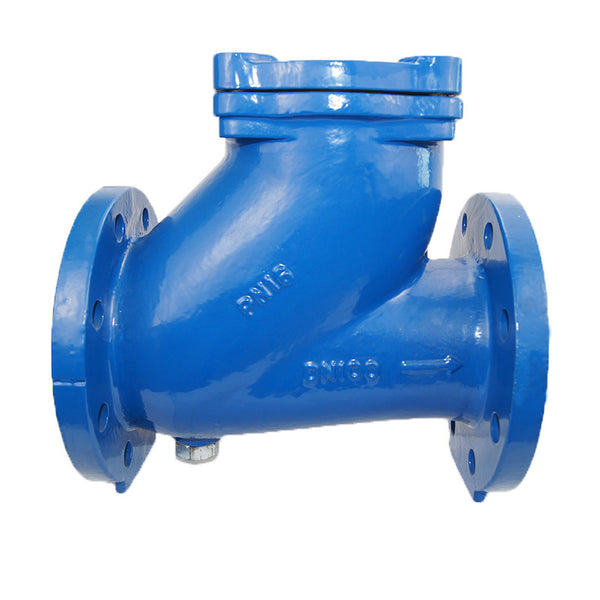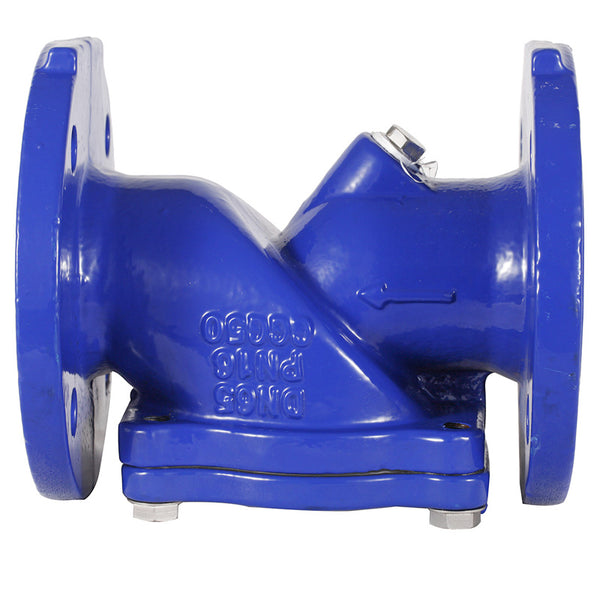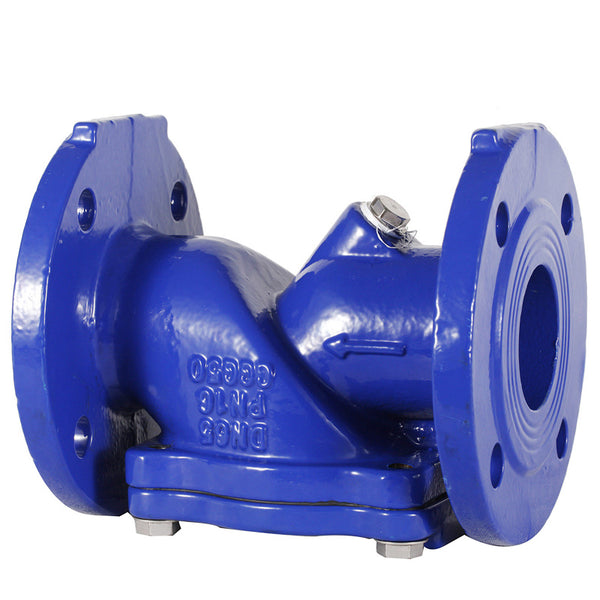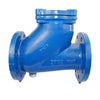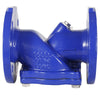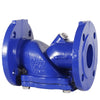PRODUCT DETAILS
Ball Type Check Valve Introduction
Ball check valve is a kind of check valve with multi-ball, multi-runner and multi-cone inverted fluid structure, which is mainly composed of front and rear valve body, rubber ball, cone body and so on.
Its working principle is: the rubber ball in the ball cover for a short trip rolling to realize the opening and closing of the valve. When the pump starts, the water under the action of pressure to open the rubber ball, so that the rubber ball rolled to the right, by the back of the valve body in the cone body to fix its position, the check valve is open; pump stops, due to the piping system in the backwater pressure, forcing the rubber ball rolled to the left side of the front valve body, to achieve the closure of the check valve. The rubber ball is made of hollow steel ball, and the rubber with good elasticity is used to ensure the sealing and reduce the damage to the pipeline system in the process of closing the valve. Cone with holes in the valve when the valve is opened on the steel ball to play a fixed role and eliminate the rubber ball and cone contact area of the pressure, so that the contact for the surface contact, reducing the rubber ball in the valve body of the hydraulic loss caused by trembling.
This valve is made with strong and durable materials, ensuring long-lasting performance. Its ball design allows for a tight seal and prevents any backflow, keeping your system running smoothly. Trust the expertise and quality of this valve to secure your system's functionality.
Ball Type Check Valve Drawing

Standard of implementation
| Category | Details |
|---|---|
| Type | Flange |
| Face to Face | API609, BS5155, DIN3202, ISO5752 |
| Flange | DIN, BS, UNI, ISO, ANSI, AS, JIS |
| Mounting Flange | ISO5211 |
| Working Pressure | PN16 (200PSI) |
| Application | HVAC, Water Supply & Sewage, Food & Beverage, Chemical/ Petrochemical Processing, Power and Utilities, Paper and Pulp, Ship Building |
Standard Materials Of Main Parts
| ITEM | PART NAME | MATERIAL |
|---|---|---|
| 1 | Body | DI |
| 2 | Bonnet | DI |
| 3 | Bolt | CS |
| 4 | Bolt | EPDM |
Dimensions:(mm)
| DN | F6 | Pn10 | Pn16 | ||||||
| L | D | D1 | D2 | n-Ød | D | D1 | D2 | n-Ød | |
| 50 | 200 | 165 | 125 | 102 | 4-18 | 165 | 125 | 102 | 4-18 |
| 65 | 240 | 185 | 145 | 122 | 4-18 | 185 | 145 | 122 | 4-18 |
| 80 | 260 | 200 | 160 | 138 | 8-18 | 200 | 160 | 138 | 8-18 |
| 100 | 300 | 220 | 180 | 158 | 8-18 | 220 | 180 | 158 | 8-18 |
| 125 | 350 | 250 | 210 | 188 | 8-18 | 250 | 210 | 188 | 8-18 |
| 150 | 400 | 285 | 240 | 212 | 8-23 | 285 | 240 | 212 | 8-23 |
| 200 | 500 | 340 | 295 | 268 | 8-23 | 340 | 295 | 268 | 12-23 |
| 250 | 600 | 395 | 350 | 320 | 12-23 | 405 | 355 | 320 | 12-27 |
| 300 | 700 | 445 | 400 | 370 | 12-23 | 460 | 410 | 378 | 12-27 |
| 350 | 800 | 505 | 460 | 430 | 16-23 | 520 | 470 | 438 | 16-27 |
| 400 | 900 | 565 | 515 | 482 | 16-27 | 580 | 525 | 490 | 16-30 |
| 450 | 1000 | 615 | 565 | 530 | 20-27 | 640 | 585 | 550 | 20-30 |
| 500 | 1100 | 670 | 620 | 585 | 20-27 | 715 | 650 | 610 | 20-33 |
| 600 | 1300 | 780 | 725 | 685 | 20-30 | 840 | 770 | 725 | 20-36 |
REVIEWS
Download
FAQs
What is a check valve used for?
A check valve is a valve that allows fluid to flow in one direction and prevents backflow. The structure can be divided into two major categories: one is a ball check valve, whose gate body is spherical and can be opened or closed automatically; the other is a disc check valve, whose gate body is a round disc shape that can prevent backflow according to the pressure of the fluid.
What materials are check valves made of?
Check valves can be made of a variety of materials, including brass, stainless steel, cast iron, plastic (PVC or CPVC), and other alloys, and are selected according to the application and fluid type.
Where are check valves usually installed?
Check valves are commonly used in applications such as water and wastewater systems, oil and gas pipelines, chemical processing, and HVAC systems to prevent backflow and protect equipment.
How to tell if a check valve is working properly?
A properly functioning check valve should allow fluid to flow in one direction without any noticeable resistance and completely prevent backflow. Signs of failure include reverse flow, unusual noise or vibration.
How to install a check valve?
Check valves should be installed in the direction of flow indicated on the valve body. Check valves are usually installed in horizontal or vertical piping systems, depending on the specific type and purpose.
